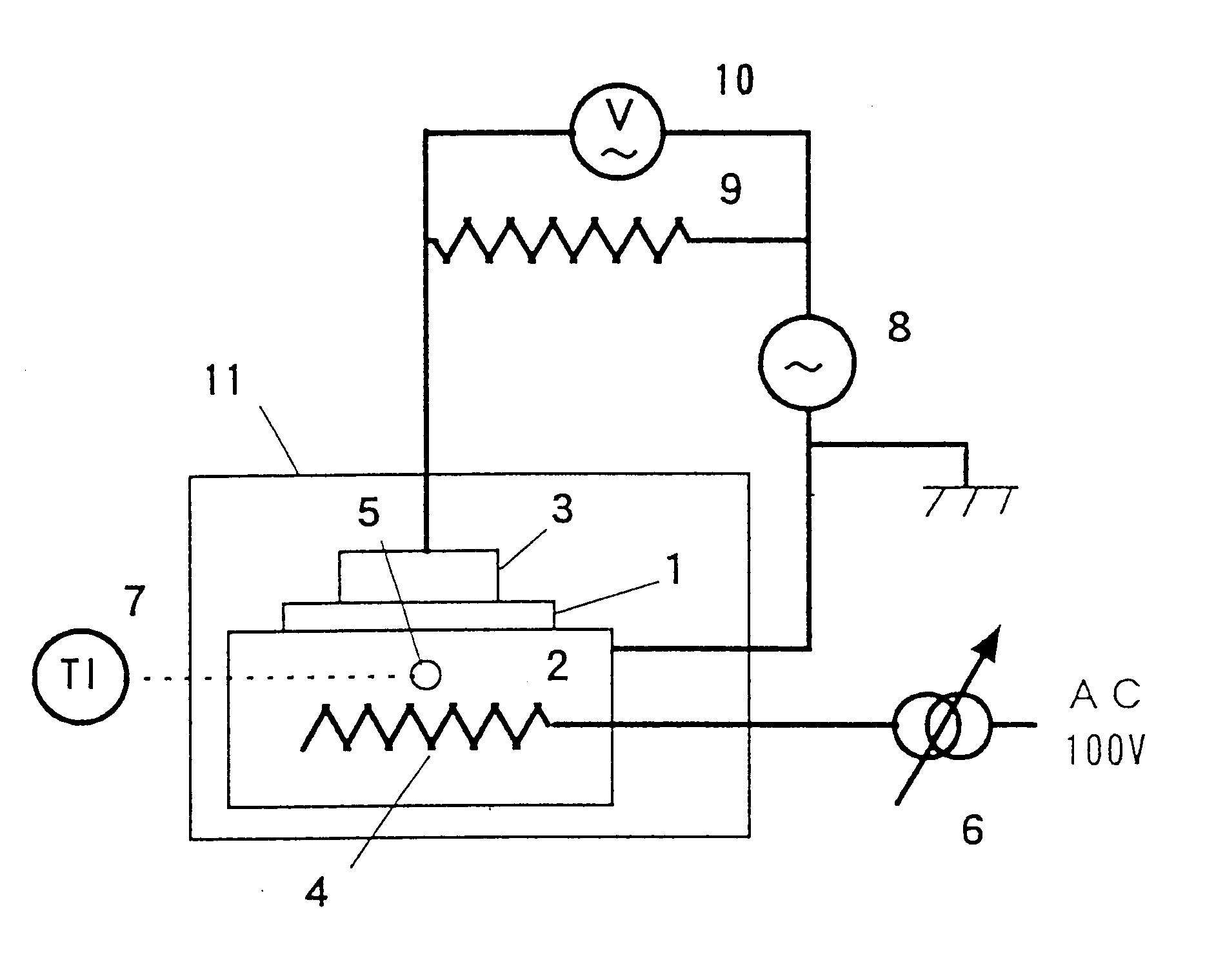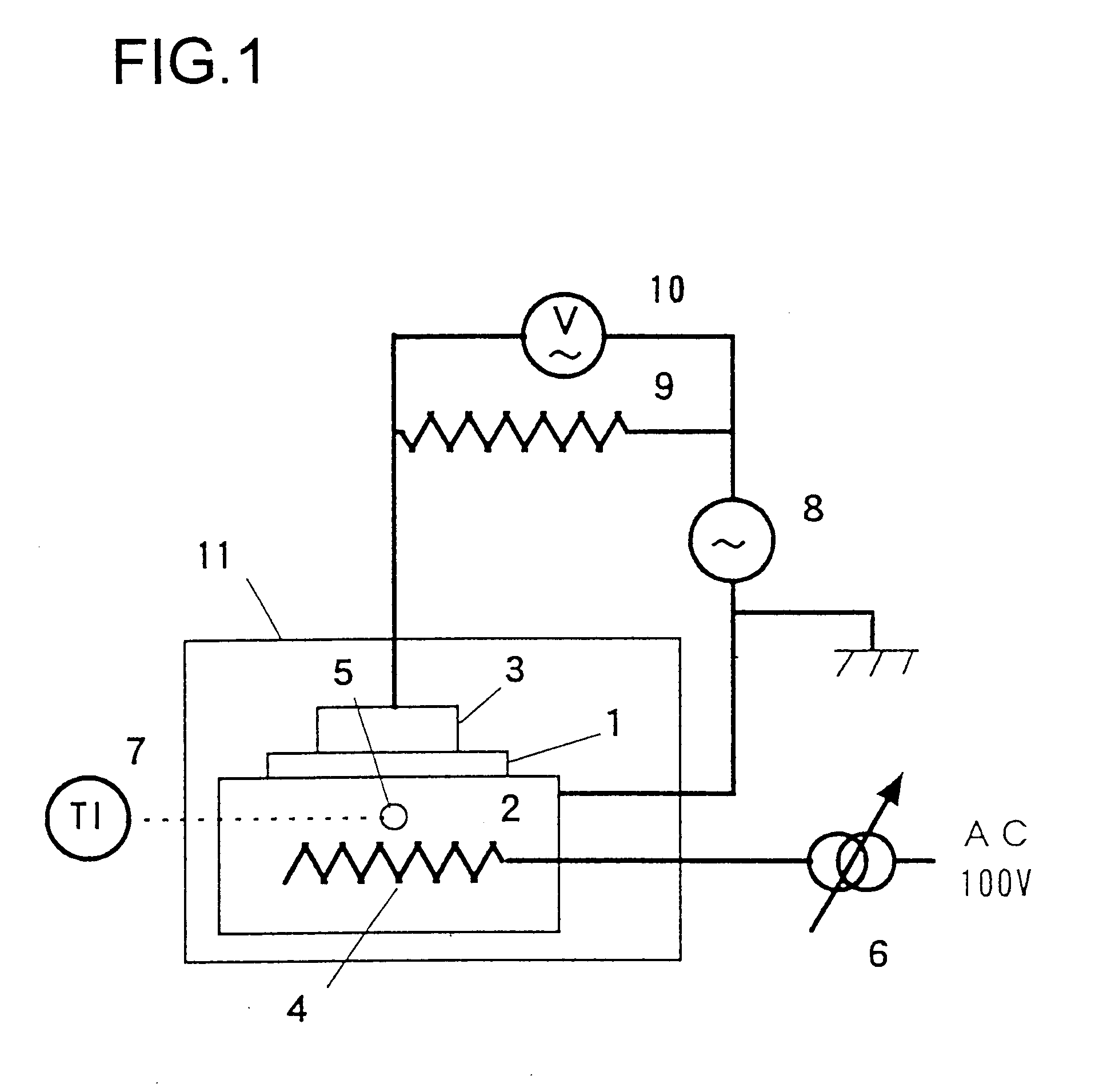However, the
thermal deformation of the base film of the thermal transfer ribbon becomes nonnegligible by the increase of the
thermal head temperature in printing to cause the problems of the unclear printed image and the generation of crease of the thermal transfer ribbon and, in extreme case, the printing becomes completely impossible.
However, the workability in the ink layer application process and the slitting process becomes poor by merely decreasing the thickness of conventional polyester film.
However, when a
polymer incorporated with
inert particles is formed to a film while keeping the concentration of the particles at a constant level in the process for the production of an ultrathin film which is an object of the present invention, the number of the
inert particles per unit area decreases, the distance between protrusions on the film surface originated from the particles increases and the slipperiness of the film becomes poor owing to excessive flattening of the film surface.
When the
diameter of the
inert particle is increased, voids are frequently generated on the interface, i.e. around the inert particle owing to the poor affinity of the inert particle and the
thermoplastic polymer especially in the melt-
extrusion or drawing at a high drafting ratio, resulting in the occurrence of problems of remarkable lowering of the mechanical properties (e.g.
mechanical strength) of the produced film and the increase in the breakage frequency in the production of the film to lower the productivity of the film.
A polyester film having restricted
surface roughness is proposed as such base film in JP A62-299389, however, the above two problems cannot be solved by such film.
When the adhesivity is insufficient, the whole ink layer is transferred to the transfer object paper to cause remarkable deterioration of the
gradation.
Since a polyester film generally has high
crystal orientation, it has poor adhesivity to ink layer, etc., and good adhesion is difficult to attain by the direct application of an ink layer to the film.
To solve the problem, applications of physical and chemical treatments to the film surface for increasing the adhesivity to the film have been proposed, however, sufficient adhesivity cannot be attained by these methods.
It is necessary to increase the film-forming speed to improve the productivity of a thermal transfer ribbon, however, there is a limitation in the increase of the film-forming speed owing to the possible increase in the shrinkage of the film in heating.
However, the improvement of the yield also has a limitation owing to the unevenness of the physical properties of the film in lateral direction to limit the center part of the film to be suitable as the product.
A method for improving the productivity of a film is the increase of the film-forming speed by increasing the rotational speed of the chill drum, however, excessive increase of the rotational speed of the chill drum causes the insufficient contact of the film to the chill drum resulting in the problem of increased unevenness of the film thickness.
If the above endothermic subpeak temperature is present only below 225.degree. C., the thermal dimensional stability becomes poor by the application of heat of the subpeak temperature or above to the film.
A film having an endothermic subpeak temperature higher than the above level is undesirable owing to the loss of flatness.
When the average particle
diameter of the spherical fine
silica particle (SB) is smaller than 0.01 .mu.m, the improvement on the slipperiness and workability of the film is insufficient and when it exceeds 0.8 .mu.m, the surface of the film becomes excessively rough to increase the space factor to an undesirable level.
When the average
surface roughness is smaller than 10 nm, a sufficient slipperiness cannot be attained and the winding of the film becomes difficult.
A film having an average
surface roughness of larger than 120 nm has insufficient
thermal conductivity in the high-speed printing with a thermal transfer printer and the printed image becomes indistinct.
When the addition amount of the spherical fine
silica particle (S.sub.A) is less than 0.1% by weight, the slipperiness and workability of the film are insufficient and a film containing more than 2% by weight of the particle has increased surface roughness and space factor and undesirably lowered
breaking strength of the film.
When the addition amount of the spherical fine
silica particle (S.sub.B) is less than 0.05% by weight, the slipperiness and workability of the film become insufficient and when it exceeds 2% by weight, the space factor increases to an undesirable level.
When the average particle
diameter of
calcium carbonate is smaller than 0.5 .mu.m, the air-squeezing property in the winding of the film in the form of a master roll or a product roll becomes poor (the escape of the entrained air is difficult) and, accordingly, the film is liable to generate crease and has insufficient slipperiness to lower the
work ability in the
processing stage to an undesirable level.
When the amount of
calcium carbonate is less than 0.1% by weight, the air-squeezing property in the winding of the film becomes poor and when it exceeds 2% by weight, the surface of the film becomes too rough and the
dielectric breakdown voltage is lowered to undesirable level.
Aluminum silicate having an average particle diameter of the smaller than 0.1 .mu.m is undesirable owing to the loss of slipperiness of the film to lower the workability, and when the average particle diameter exceeds 2.0 .mu.m, the surface of the film becomes too rough and the space factor is increased.
When the content of
aluminum silicate is less than 0.05% by weight, the air-squeezing property of the film in winding becomes poor and when it exceeds 1% by weight, the surface of the film becomes too rough and the space factor is increased.
If the workability of the film of the present invention is to be attained only by the use of
calcium carbonate, the space factor of the film becomes excessively large.
On the other hand, the use of only
aluminum silicate cannot form large protrusions to fail in compatibilizing the workability and the space factor.
A film having an average surface roughness of smaller than 10 nm has insufficient slipperiness and the winding of the film is difficult.
On the other hand, a film having a thickness of thinner than 0.5 .mu.m is also undesirable because such film has low strength and poor
processing suitability and the strength is insufficient for thermal transfer ribbon.
When a thermal transfer ribbon is produced from a film which does not satisfy the above characteristic condition B1, the direction of the orientation principal axis becomes considerably different from the tension (longitudinal direction) applied to the thermal transfer ribbon in printing and the problem of the generation of slant crease is liable to occur.
The edge parts of the film gripped with the clips in the tenter are not subjected to sufficient biaxial drawing in the lateral drawing process.
However, if the film of the present invention does not satisfy the above characteristic condition A or the stock film does not satisfy the above characteristic condition B2, the generation of crease is not improved even if the film has increased Young's modulus and only a small part at the center of the stock film can be utilized as the product for getting a film free from crease and, consequently, the productivity is lowered to an undesirable level.
A film having a lateral Young's modulus of smaller than 500 kg / mm.sup.2 is also undesirable by the generation of crease owing to the shearing force applied to the film by a
thermal head and a platen roll and, in extreme case, the ribbon is broken to cause jamming trouble.
A film having a
refractive index in thickness direction of smaller than 1.493 is unpreferable owing to the deterioration of slitting workability.
A film having a
refractive index exceeding 1.505 has good slitting workability, however, it is also unpreferable owing to increased unevenness of thickness to deteriorate the flatness of the film.
A film having a longitudinal
refractive index of smaller than 1.77 is undesirable as a thermal transfer ribbon because the film cannot
resist the tension of a printer when the heat is applied to the film in printing and, in extreme case, the ribbon is broken to cause jamming trouble.
When the density is smaller than the above
lower limit, the film has low
crystallinity and poor thermal dimensional stability.
A film having a density larger than the above range is also undesirable because of excessively high
crystallinity to cause the thickness unevenness and deteriorate the flatness.
Although the
coating process may be separated from the film-forming process, the
coating film is liable to be contaminated with
dust particles in this case and the contaminated part may form a defect in printing.
 Login to View More
Login to View More 


